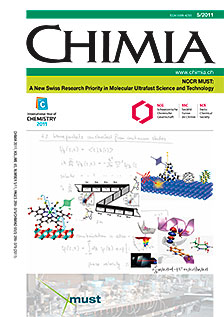Using Membrane-Supported Liquid–Liquid Extraction for the Measurement of Extraction Kinetics
FH-HES
DOI:
https://doi.org/10.2533/chimia.2011.370Keywords:
Caprolactam, Diffusion coefficient, Membrane extraction, Overall mass transfer coefficientAbstract
Membrane-supported liquid–liquid extraction uses artificial membranes for the generation of a phase interface between the two liquid phases involved in extraction. Additional equipment for the generation of droplets as well as phase separation afterwards is no longer necessary. Since the membranes used for this special type of extraction are quite well described concerning thickness, porosity, tortuosity and material it is possible to generate information about the diffusion coefficient of the component to be extracted within the preferred solvent from extraction trails easily. This article describes an experimental set-up for both the proof of principle of membrane-supported liquid–liquid extraction and, using a dedicated computer-aided data treatment, how to calculate the overall mass transfer coefficient as well as the diffusion coefficient for a given system within moderate testing duration.Downloads
Published
2011-05-26
Issue
Section
Columns, Conference Reports
Categories
License
Copyright (c) 2011 Swiss Chemical Society

This work is licensed under a Creative Commons Attribution-NonCommercial 4.0 International License.
How to Cite
[1]
W. Riedl, D. Mollet, G. Grundler, Chimia 2011, 65, 370, DOI: 10.2533/chimia.2011.370.







